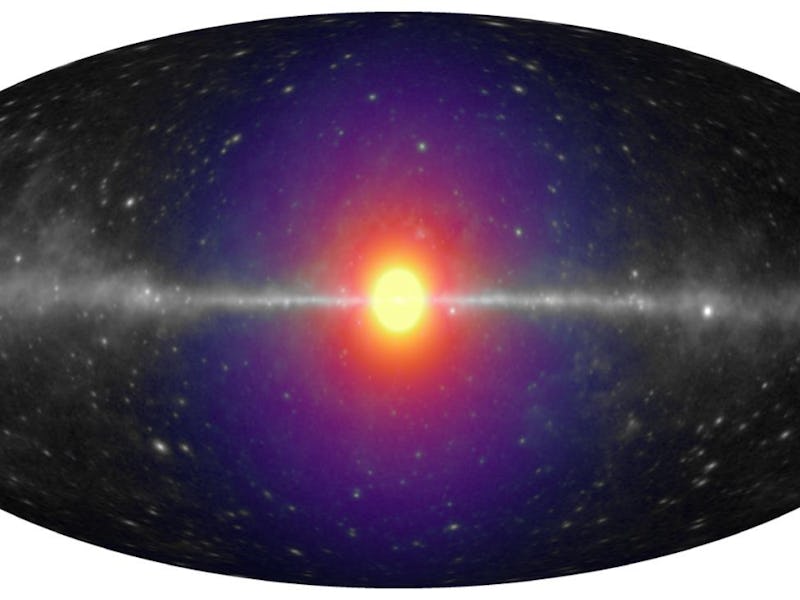Scientists are on the hunt for dark matter in the Milky Way
A new study put one key element of dark matter to the test.

In 1933, astronomer Fritz Zwicky noticed something missing from the universe. A form of mass had to account for the space in between cosmic bodies, and holding matter in place through gravitational force. That missing mass was dubbed dark matter.
Although dark matter is believed to account for more than 80 percent of the universe, it has never been successfully detected by scientists since it’s, well, dark.
A study, published Thursday in the journal Science, puts one leading theory about dark matter to the test, searching for the nearly invisible substance nearby within our own galaxy, the Milky Way. The findings ruled out dark matter being the source of electromagnetic signals that were observed in surrounding galaxies, which scientists were hoping would provide them with the first microscopic evidence of dark matter.
Instead, the new study opened up a whole new realm of the ongoing search for dark matter that could lead to a discovery soon.
Scientists have been searching for dark matter in the vast cosmos for more than 20 years.
Searching for clues
Scientists have been on the hunt for dark matter in the universe for years, and yet their only proof of its existence is the gravitational effect it has on other objects in the universe. It's still unclear what particles make up dark matter, and whether these particles are yet to be discovered.
In 2014, a study detailed the discovery of excess X-ray emissions from 73 nearby galaxies and galaxy clusters recorded with the European Space Agency's XMM-Newton satellite.
The scientists dubbed the X-ray emissions as 3.5 keV line.
At the time, the team of scientists behind the discovery believed that the excess could be due to hypothetical dark matter particles known as sterile neutrinos.
Therefore, if scientists are able to detect the neutrinos then they could possibly detect dark matter by scanning galaxies for electromagnetic radiation in the form of X-ray emissions.
However, the recent study searched for 3.5 keV line in dark places of the Milky Way, and found no evidence of it.
The hunt continues
For the new study, the researchers used meta-analysis of raw data taken by the XMM-Newton space X-ray telescope, launched by the European Space Agency in 1999, of objects in the galaxy over a period of 20 years.
They searched for dark matter in so-called ‘empty spaces’ in the Milky Way, where only dark matter is expected to exist.
"This 2014 paper and follow-up works confirmed the signal generated a significant amount of interest in the astrophysics and particle physics communities because of the possibility of knowing, for the first time, precisely what dark matter is at a microscopic level," Ben Safdi, assistant professor of physics at the University of Michigan, and co-author of the study said in a statement. "Our finding does not mean that the dark matter is not a sterile neutrino, but it means that -- contrary to what was claimed in 2014 -- there is no experimental evidence to-date that points towards its existence."
Telescopes often catch faint clues of dark matter in the cosmos.
But the technique that the researchers developed could be useful in detecting other dark matter signatures in the universe, as it offers extremely sensitive analysis.
"While this work does, unfortunately, throw cold water on what looked like might have been the first evidence for the microscopic nature of dark matter, it does open up a whole new approach to looking for dark matter which could lead to a discovery in the near future," Safdi said.
The team hopes to use the same analysis technique to scan data taken from other X-ray telescopes in high detail in order to search for other light signals across a larger range of energies.
"If you are looking generically for dark-matter decay and you want to have more sensitivity, this is the way," Nicholas Rodd, a physicist affiliated with the Berkeley Lab theory group and the Berkeley Center for Theoretical Physics, and co-author of the study, said in the statement. "This is a general tool that anyone searching for dark matter can use.”